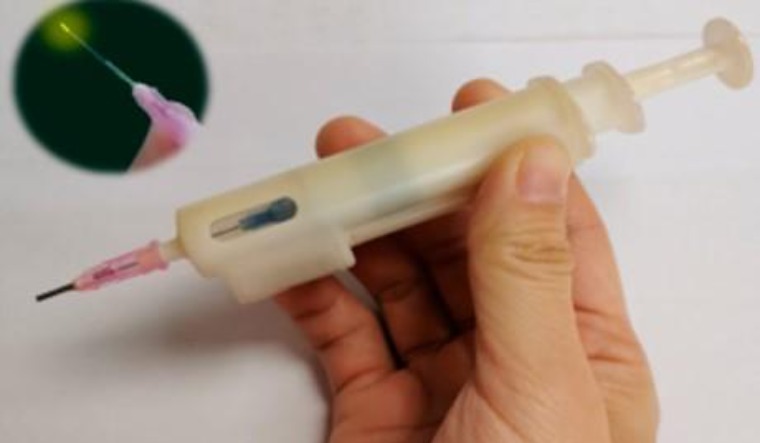Exposure to some odourless, colourless and tasteless gases, such as nerve agents, can be toxic or even lethal.However, humans can't detect many toxic vapours, such as poisonous nerve agents or volatile amines released from spoiled foods, so a sensor that can notice these gases' very minute concentrations would be useful.
Having the ability to detect other types of vapors could save people from eating spoiled or rotten food. Easy-to-use portable devices could, therefore, go a long way toward protecting the public. Now researchers have created a pen-like sensor that changes colour when exposed to harmful gases.
Fluorescence-based sensors are a potential solution because they are inexpensive and can reveal trace amounts of compounds. However, some fluorescing compounds clump together once they react with gases, reducing their intensity, and they can require complex fabrication processes. Yet other fluorophores produce more intense light when they are clumped together -- aggregation-induced emission fluorogens (AIEgens). Most of the current detection methods using AIEgens are liquid-based, requiring gases to be dissolved in solution before analysis, and are not easily portable. So, Zhe Jiao, Pengfei Zhang, Haitao Feng, Ben Zhong Tang and colleagues wanted to adapt AIEgens to be integrated into a needle-thin fiber, creating a handheld device whose tip "turns on" in the presence of a particular gas.
The researchers, reporting in ACS Materials Letters, developed two AIEgen-based "handy pens," one for identifying the nerve agent diethyl chlorophosphite (DCP) and the other for amines produced by rotting food. First, they coated silicon dioxide polymer fibers with a thin sol-gel layer to immobilize AIEgens. Next, they added an AIEgen that changes color when it reacts with DCP on one set of fibers, and an AIEgen that reacts with amines on another set. The coated fibers were then placed at the end of a pen-like device with a UV light source inside. The DCP sensor's tip changed from a yellow fluorescence to blue within 30 minutes of exposure to DCP. The amine sensor's tip was initially a mild blue-gray color, but it generated a vibrant yellow-colored light within five minutes when it was exposed to volatile amine vapors. Both sensors reverted to the original hue when exposed to neutralizing vapors, demonstrating that they were reversible.
Finally, the team used the amine-responsive handy pen to distinguish between a salmon sample that had been refrigerated and one that had been left at room temperature for 48 hours. The researchers say that other handy pens could be easily developed by using different vapor-sensitive AIEgens, which could be applied to food safety, environmental monitoring or public safety applications.




